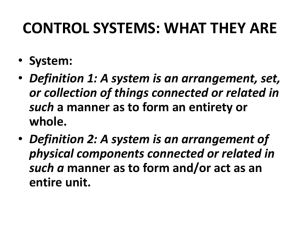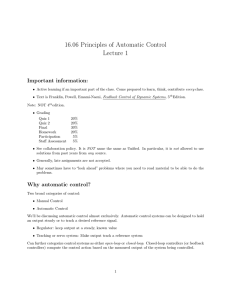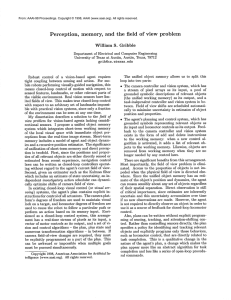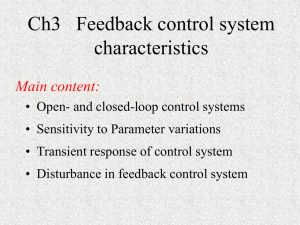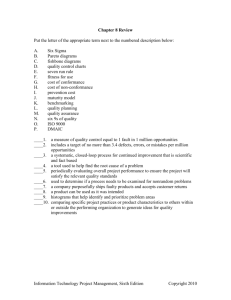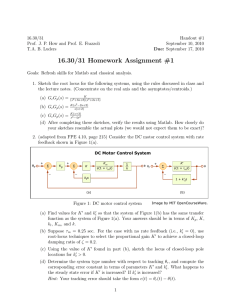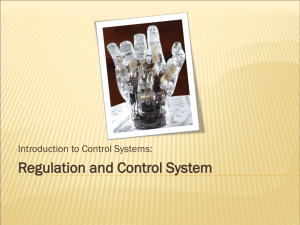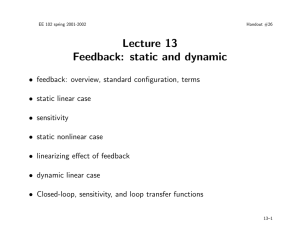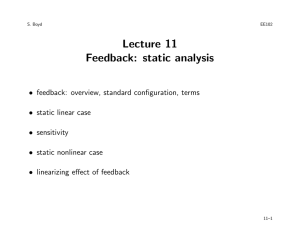+ (xi) 5
advertisement
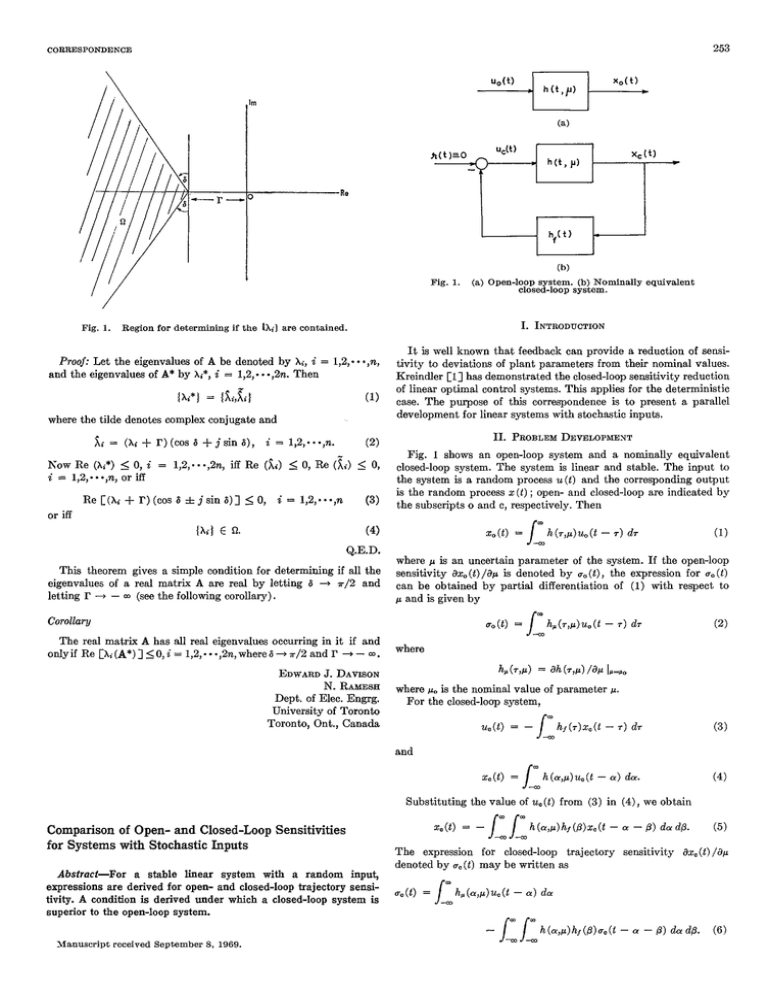
253
COERESPONDEIiCE
(h)
Fig. 1.
Fig. 1.
I.IATRODTJCTION
Region for determining if the h i ] are contained.
Proof: Let the eigenvalues of A be denoted by Xi, i
and the eigenvalues of A* by Xi*, i = 1,2, .,2n.
=
1,2,...,n,
Then
(1)
{Xi*) = { L , X i j
where the t.ilde denotes complex conjugate and
=
(a) Open-loop system. (b) Nominally equivalent
closed-loop system.
(X<
+ r)(cos 6 + j s i n
61,
i
=
11. PROBLEM
DEVELOPMEST
1 , 2 , - - . , 7 ~ .( 2 )
-,
h’ow Re (Xi*) 5 0, i = 1,2,..-,2n, i
ff Re
i = 1,2,--*,n,or ifi
(Xi)
5 0, Re
(xi)5 0,
(3)
R~[(Xi+r)(cos6ijsin6)]jO, i=1,2,...,n
or iff
{Xi]
E
(4)
Q.
Q.E.D.
This theorem gives a simple condit.ion for determining if all the
eigenvalues of a real matrix A are real by letting 6 + ~ / and
2
letting r 4 - m (see the following corollary).
Corollary
The real matrix A has all real eigenvalues occurring in it if and
odyif Re [Xi(A*)]<O,i=1,2,...,2n,where6+ir/~andr +- m.
EDWARD
J. DAVISON
N. RAMESH
Dept. of Elec. Engrg.
University of Toronto
Toronto, Ont., Canada
Comparison of Open- and Closed-Loop Sensitivities
for Systems with Stochastic Inputs
dbSfruCf-For
a stable linear system with a random input,
expressions are derived for open- and closed-loop trajectory sensitivity.A condition is derived under which a closed-loop system is
superior to the open-loop system.
Manuscript received September 8. 1969.
It is well known t.hat feedback can provide a r e d u d o n of sensitivity to deviations of plant parameters from their nominal values.
Kreindler [I] has demonst,rated t,he closed-loop sensitivity reduct,ion
of linear optimal control systems. This applies for t,he deterministic
case. The purpose of this correqondence is to present a parallel
development for linear systems with stochastic inputs.
Fig. 1 shows an open-loop system and a nominally equivalent
closed-loop system. The system is linear and stable. The input to
the system is a random process u ( t ) and the corresponding output
is the random process x(t) ; open- and closed-loop are indicat,ed by
t,he subscripts o and c, respectively. Then
Zo(t)
=
1:
h,(T,p)Uo(t
- 7 ) d7
(1)
where p is an uncertain parameter of t,he system. If the open-loop
sensitivity axo(t)/ap is denoted by ~ . , ( t ) , the expression for u0( t )
can be obtained by partial different.iat,ion of ( 1 ) wit.h respect to
254
Since uo =
IEEE TRANSACTIONS ON AUTO?&ATIC COXIlZOL, APRIL
u0,
( 6 ) gives, in view of (21,
19'io
IV. CONCLUSION
A condition for closed-loop sensitivity reduction of linear systems
with random inputs is derived. It is analogous to K h a n ' s result
for determinist.ic systems.
v. v. s. S.m?kLk
SAHJENDRA
X. SISGH~
Dept. of Elec. Engrg.
Indian Institute of Science
Bangalore 12, India
REFEREXCES
[l] E. IIreindler, "Closed-loop sensitivit.y reduction of linear Optimal
Control, 7-01. AC-13.
control sgstems," I E E E Trans.Automatic
254-262 June 1968
121
B. Davknaort a.nd W. L. Root.. RandomSirnals and IVotSe.
New York: M6G~~w-Hill
1958.
[3]R . E. Kalman,, "When & a linear control system o timal?" Trans.
ASME. J.Baslc Engrg., ser. D , FOI. 86. pp. 1-10, d r c h 1964.
. . $?:
I
Wow with the Dept. of Elec. Engrg., The Johns Hopkins Cniversity,
Baltimore. Md. 21218.
Controllability versus Sensitivity in Linear
Discrete Systems
J m J-
Abstract-This correspondence deals with the controllability of
the sensitivity system associated to a given linear discrete system.
It is proved that,apart from exceptional cases, the sensitivity
system is always uncontrollable provided that the number of the
parameters is sufficiently large. The results presented here have a
structuralnaturesincethey
involve only the dimensions of the
state, control, and parameter vectors.
J-m J m
.RC(7+a+B-r-6)dcudBdrd6.
r
(11)
I. INTRODUCTION
The spectral density S,(f)is given by
So(f) =
R, (X) errp ( - j w h ) dh
(12)
--w
From (11) we get
So cf)
= S c (f)
+ H*Hf*So (f) + HHfSo(f)
+ H*HHf*Hf& ( f)
= I 1 + H H f I'Ss.(f)
The aim of this correspondence is to e.xtend to the discrete-time
case the results given in [l], [Z] on the structural uncontrollability
of the sensit.ivity system. Consider the time-invariant, linear discrete
system
z(k 1) = F ( p ) z ( k ) G ( p ) u ( k )
(1)
+
(13)
where H and Hf stand for the system funct.ion and t.he asterisk
denotes complex conjugate.
+
where u, x, and p are the control, state, and parameter vector6 of
dimension m, n, and q, respect,ively, and F ( and G ( - ) are differentiable at t,hepoint p (nominalvalue of theparameter).The
sensitivity system is defined as follows:
.)
(2 1
111. CRITERION
OF COMPARISON
We shall choose a positive real function given by
as the criterion of comparison for open- and closed-loop sensitivities.
For closed-loop sensit,ivity reduction t.he inequality to be satisfied is
lim
w
-&1:
uc$(t)dt
l
5 lim T-so 2T
.L
T
u:(t) dt.
(14)
Equat.ion (14) is equivalent in frequency domain to
i
J-
= l,...,q
J-
Substituting for So from (13) in ( X ) , we get
I 1 + H H f 1' 1 1.
(16)
Equat.ion (16) is analogous to Kalman's [3] equation for deterministic systems.
&lanuscript received May 12, 1969: revised September 9, 1960.
